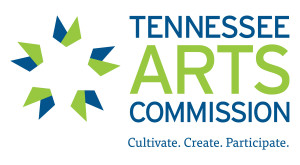Spectrum: An Eclectic Collaboration at Oz
On May 18 and 19, Nashville’s contemporary music ensemble Intersection collaborated with the choral ensemble Nashville in Harmony to present a concert titled Spectrum at

OZ arts in Nashville. The evening consisted of a rather eclectic collection of pieces culminating with a performance of Those Moments, a special commission from T.J. Cole for a work for choir and mixed chamber ensemble with pre-recorded audio.
The concert began with Nashville in Harmony performing “Until All of Us are Free” and “Why We Sing,” two moving, and culturally conscious selections performed in a dynamically nuanced and expressive manner led with enthusiasm by director Don Schlosser. These are accessible pieces that perfectly fulfill the choir’s mission to “build community and create social change.” In the second number former members were invited to join the choir as they performed a chilling rendition of that anthem.
Next, as the choir exited the stage, the musicians from Intersection entered to perform Esa-Pekka Salonen’s Mania (2000). Mania is a kind of virtuosic vehicle for cello, written for Finnish cello virtuoso Anssi Karttunen, that seems to merge the constant repetition of minimalism with an equally constant and continuous developing variation as the solo
cello fades in and out of a rich and dense accompanying framework. Salonen describes the work as:
I wanted to compose music, which consists of a number of relatively simple gestures or archetypes, which are constantly evolving and changing; not so much through traditional variation techniques, but trough a kind of metamorphosis. A maggot becomes a cocoon, which becomes a butterfly: very different gestalts indeed, but the DNA is the same.
Intersection’s Michael Samis proved himself up to the task with a brisk articulation of Salonen’s rushing gestures, all without losing clarity or feel. Maestra Corcoran admirably maintained a precise balance in the ensemble in a composition that requires sheer virtuosity from nearly every one of its members. At the pause before the applause one could hear the audience join the musicians in catching their breath.
Before intermission Nashville in Harmony returned to the stage to perform three more songs, Christopher Tin’s “Sogno di Volare,” Annie Lennox’s “1000 Beautiful Things,” and Taylor and Dallas’s “I Wish I Knew How It Would Feel to Be Free.” Of the three, Tin’s “Sogno di Volare” (The Dream of Flight) was the most interesting. A theme from the video game, Sid Meier’s Civilization VI, Tin’s choral anthem is a setting of a modernization of Leonardo da Vinci’s writings on flight in which the composer hoped to “capture the essence of exploration; both the physical exploration of seeking new lands, but also the mental exploration of expanding the frontiers of science and philosophy.” The soloists for Lennox’s “1000 Beautiful Things,” Grace Wegener, Paige Pennigar, and Lia Van de Krol were remarkable in their articulation and timbral color, each adding a subtle interpretation from within the color of their individual voices that, on the one hand, emphasized their separate indentities but on teh other, blended quite well within the broader group–a perfect metaphor for Nashville in Harmony’s aesthetic (and political) goals.

After intermission Intersection returned to the stage to perform Liza Lim’s Voodoo Child (1989). Lim’s work is also a vehicle for virtuosity, but not of the traditional sort of virtuosity heard in Salonen’s piece. Lim’s work features extended techniques such as guttural song from the soprano, bi-phonics (two pitches at once) from the clarinet and other non-traditional sounds to create clouds of sound that tended to clash in their expression of the extreme emotive sentiments as drawn from Sappho’s poem To a Young Girl. The result is a kind of synthesis of the sound palates of Edgard Varese and the intense primal expressions of George Crumb. For me this was the most interesting performance of the night. Each instrument displayed extended techniques that reached beyond its expectations even as other gestures seemed to be remarkably idiomatic to each instrument. Special mention for this goes particularly to Alejandro Acierto (clarinet) and Kristen Holritz (flute). Particularly stunning was Rebekah Alexander’s

(soprano) performance. Alexander, through her performances with Chatterbird and now Intersection, is developing a strong reputation for bringing the highest musicality to the most difficult contemporary repertoire for voice. Here she sang with a bracing charisma and personality that moved the audience to the edge of their seats. One hopes we might someday get the opportunity to hear her interpret Arnold Schoenberg’s Pierrot Lunaire or even Ligeti’s Mysteries of the Macabre.
Finally, the evening ended with the commission, Cole’s Those Moments (2019) performed by both ensembles together. As stated in the program, “Cole’s work draws inspiration from personal stories gathered by the local LGBTQ+ community and explores the gender spectrum through visual art and projections integrated with musical creation.” The result is a six-movement choral work which employs the prerecorded and edited voices of various choral members, speaking on the role gender has played in their individual lives, as an introduction to each movement. The chorus’s function is very much akin to that of a Greek chorus, providing a moral, interpretive commentary on what is heard in the recording that introduces the movement. Here Cole showed a real talent for antiphonal and stirring, even Handelian, imitative contrapuntal writing. But the sound was extended by the composer through the addition of the sounds of the choir murmuring and chattering, creating a spectrum of voices. The most moving moment of the work in my opinion was at the great reprise of the opening line “Can you hear my voice? Let me have my harmony,” which is revamped into a refrain of the final movement:
I remember / Hear my voice / Hear my harmony
And at the final cadence the audience rose to its feet. In a remarkably eclectic night filled with fantastic choral singing and the most cutting-edge avant-garde music, perhaps the best measure of success resided in the fact that when the lights came up, we all felt as though we were part of the same community—a tremendous accomplishment in these times.




I’d like to add that the song “Why We Sing” featured NIH soloist Cathy Barker. As a longtime Nashville In Harmony fan, I think this was a great concert! Of course, Intersection is always wonderful to hear as well—incredible work.